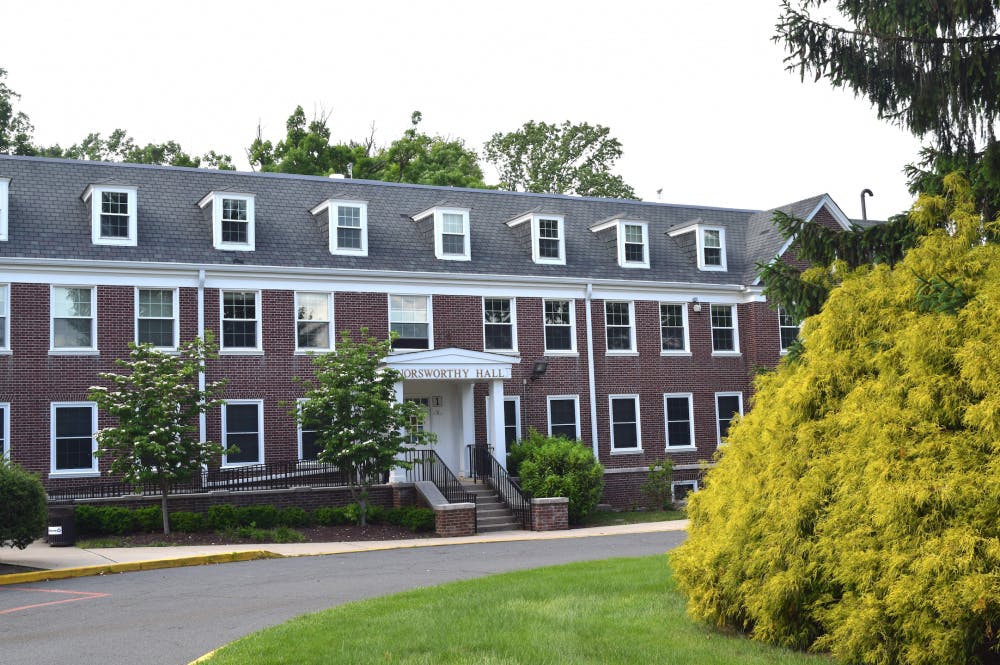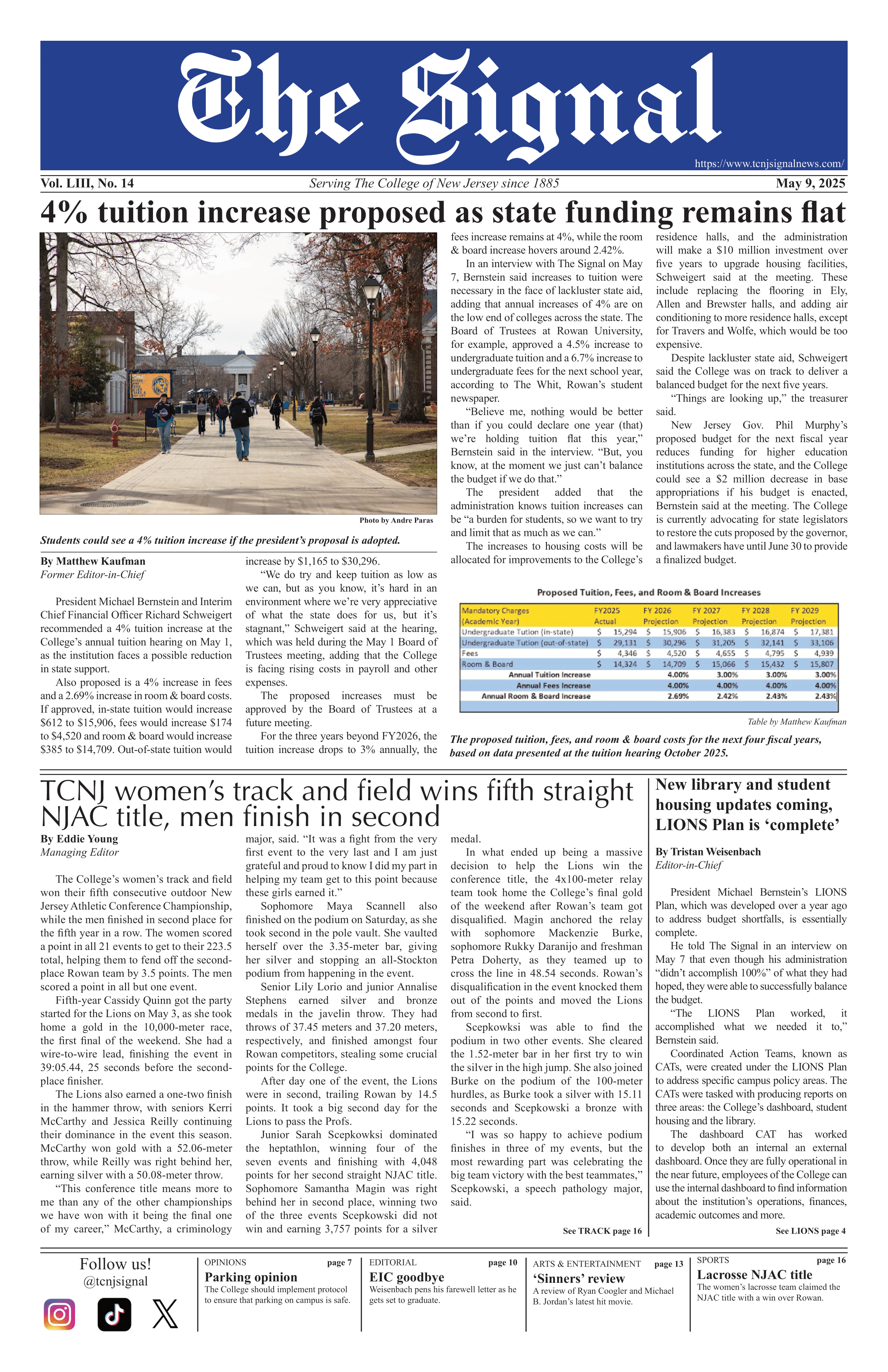By Chelsie Derman
Opinions Editor
I’m sure we can all agree — staying in quarantine is not exactly the definition of exciting. After all, how much longer will we have to wait for normalcy to return? With New Jersey slowly opening back up, Foster made the right decision in tentatively opening the College’s campus, too.
While I am anticipating returning back to campus in the fall, students at the College are still waiting to hear more from President Foster regarding this information. But the College should be among the schools that reopen for fall 2020.
As of late May, the cases of coronavirus have significantly dropped. New Jersey parks and beaches have opened up. Outdoor gatherings are now limited to 250 people, and Gov. Murphy is expected to raise the limit to 500 by July 3.
With the regulations lowered, why couldn’t the College open in the fall? We still have two months until class begins. According to The New York Times’ live updates for the coronavirus, New Jersey has seen a steady decrease in COVID-19 cases. If the trend stays consistent, won’t the new cases in July be significantly decreased as well? Then add another month to that. By late August, if the trend remains steady, the College should be ready and able to open up for its students, staff and faculty.

Also, according to Forbes, other colleges and universities have already made the decision to reopen in the fall — Boston University, Brown University, Cornell University, Harvard University and Purdue University being some of the few. The College has now announced tentative plans to open up as well.
Yes, we must recognize that many media outlets suggest there could be a potential new wave of the virus. The College must take precautions. But I believe that for the time being, we should think about the moment — and, in this moment, cases in NJ are still decreasing. According to The New York Times, colleges and universities — the College included — are considering going for shorter fall semesters, and finishing before Thanksgiving break.
While keeping everyone healthy should be of the utmost importance, I and many other students are eager to return to campus in the fall. If we keep holding safety measures — washing our hands and wearing masks — then the cases of the coronavirus can stay down, like the previous trends suggest.
Friends will get together despite the quarantine. After a recent visit to the beach, people — mostly teens — are all over the place, failing to comply with social distancing regulations.
If the current tentative plan changes and all classes end up being moved online, friends will still find a way to gather, breaking the six-feet rule. The coronavirus is not just going to vanish completely — but the moment, cases are arriving at a much lower rate.
At the start of the pandemic, the U.S. went into quarantine for a major reason: to prevent every person from falling ill due to the coronavirus right away. Initially, the quarantine was for this purpose: to moderate hospitals. With hospitals tamer, nurses and doctors are more equipped to save lives.
Additionally, staying in lockdown hinders the economy — the finances of colleges all over the nation included. This past March, colleges had to refund their students for housing, dining plans and parking.
In an article by Brookings, the writer presented a pie chart with the major revenue categories for public universities: tuition, federal grants, auxiliary enterprises, all state and local sources and all other sources as well. The four categories represented 72 percent of total public university revenue. Without help from the state and with reduced tuition prices and lowered auxiliary revenue, how will colleges acquire their needed finances?
Also, the article points out how the federal stimulus package, which provides $14 billion in aid for colleges, didn’t supply enough even before the pandemic struck. According to the article, it only helps “roughly 2 percent of (the) total revenue” that colleges usually receive.
With this financial blow, colleges all over the U.S. are losing money. And, without in-person instruction in the fall, it will further hinder colleges’ finances. The drop of coronavirus cases is not the only reason to bring back in-class instruction come the fall — the economy depends on it.
Our lives at some point must return to normalcy, and Foster’s decision reflects that necessity. The coronavirus will undoubtedly impact us in the future, but for how long? Forever? We need to think ahead — to understand that, yes, this is a virus, but that does not mean it has to control our lives.
Foster’s decision to cancel in-person instruction and move to online classes for the second half of the spring semester was a good one. But now we are over the hump. It’s time to slowly return to our normal lives, to get back in the swing of how things used to be. It will not be the same world it was four months ago, but trying to regain normalcy is a step in the right direction.
After all, fear cannot be conquered by avoiding what needs to be done. Fear cannot consume us. We cannot allow it to take over our lives. So grab your hand sanitizer and your masks, and protect yourself from the coronavirus. And hopefully, with a continued decrease in cases, Foster’s tentative decision will remain.







